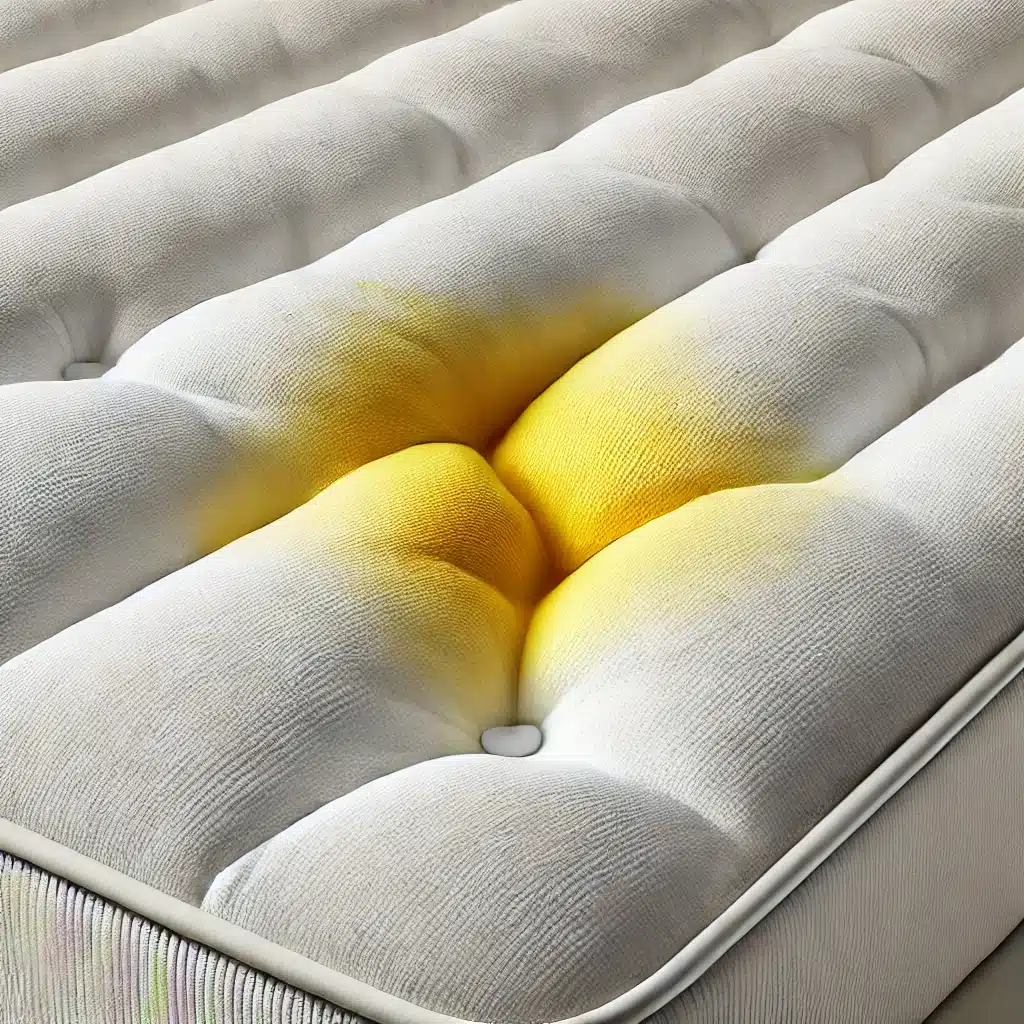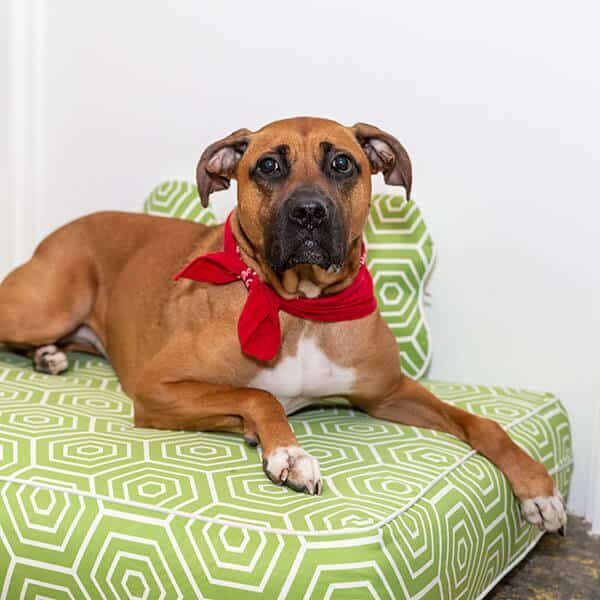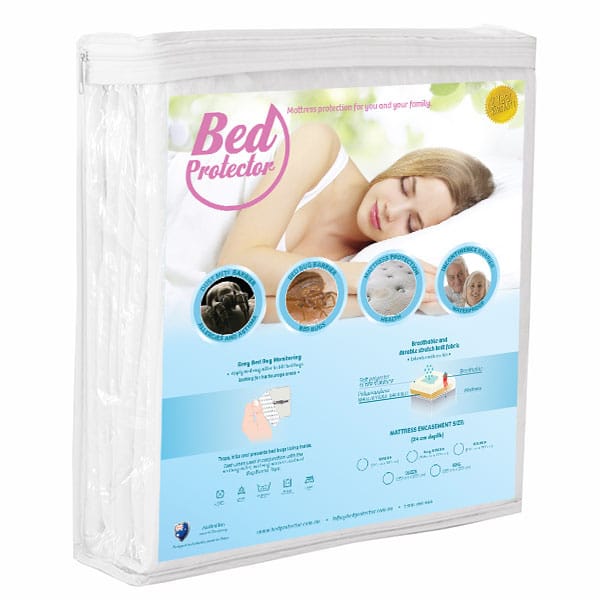
In the article
Last Updated on 27/03/2025 by Tony Abrahams
If you’ve ever had to scrub out urine, sweat stains, blood, or worse—you know the panic. But here’s the good news: it’s completely preventable.
Whether you’re dealing with kids, pets, incontinence, or just want peace of mind in the bedroom, this guide will show you how to protect your mattress from all kinds of fluids—and keep your bed fresh, clean, and stress-free for years to come.
What’s the Best Mattress Protector for Bodily Fluids?
Not all protectors are created equal. You want one that works, but doesn’t feel like you’re sleeping on a crunchy plastic bag.
The perfect mattress protector has:
- 100% waterproof protection – especially on the top and sides
- Quiet, breathable material – like terry cotton with TPU backing
- Deep pockets or full encasement – to stay snug on any mattress depth
- Hypoallergenic features – for those with dust mite or allergy concerns
Bonus Tip: TPU (thermoplastic polyurethane) is the magic material you want. It’s thin, flexible, silent, and waterproof without trapping heat like vinyl or rubber.
Also, make sure it’s machine washable. You’ll want to toss it in the wash after spills, and a protector that can’t handle that is useless in the long run.
Don’t be fooled by cheap plastic versions—they rip easily, trap heat, and feel awful to sleep on. A good protector is an investment in your sleep and your sanity.

Does Urine Soak Into a Mattress
How to Fully Protect the Bed (Not Just the Mattress)
Most people stop at the mattress, but fluids don’t. They run, soak, and spread—especially at night when you’re fast asleep and gravity takes over.
Here’s how to build a fluid-proof fortress around your bed:
✅ Full mattress encasement: Covers top, sides, and bottom with a zipper. Ideal for accidents, bed bugs, and allergens.
✅ Bed base cover or ensemble protector: Fluid can soak through bedding and trickle down onto your timber or upholstered base.
✅ Pillow protectors: Sweat and saliva build up over time, especially if you sleep hot or snore.
✅ Duvet and doona covers with waterproof linings: Protect the top layers of your bed too.
✅ Bed leg traps or barriers: Not fluid-related, but a smart add-on if you’re also dealing with bed bugs or pets.
And yes, even if the protector is “waterproof,” it’s worth layering absorbent pads on top, especially in high-risk situations like bedwetting or heavy sweating.
DIY Solutions vs Store-Bought Products
Let’s talk budget hacks. Not everyone wants to shell out $80+ on premium protectors. So what’s out there for the frugal folks?
DIY options people try:
- Puppy training pads under the fitted sheet
- Plastic tablecloths or tarps wrapped around the mattress
- Incontinence underpads (hospital-grade or disposable)
- Garbage bags taped together as emergency liners
These work in a pinch, but let’s be honest—they’re not exactly comfortable. They shift, crinkle, trap heat, and often leave gaps where fluids can sneak through.
- Store-bought doesn’t always mean “expensive.” You can find budget options at places like:
- Bed Bug Barrier – decent for light use
- Chemist Warehouse – offers incontinence bedding solutions
- Online brands – many offer quality waterproof covers with free shipping and multi-year warranties
If you’re protecting your bed from regular accidents, it’s worth upgrading to something that lasts. A high-quality protector pays for itself the first time it saves your mattress.
Cleaning and Maintenance: What If Fluids Already Soaked In?
Sometimes you find the mess too late. The sheets are soaked, the mattress smells funky, and panic sets in. Don’t worry—we’ve got a rescue plan.
🚨 Emergency Clean-Up Protocol:
- Blot up excess fluid immediately—use clean, dry towels. Press, don’t scrub.
- Apply baking soda generously to absorb moisture and neutralise odours.
- Mix equal parts white vinegar and warm water in a spray bottle. Lightly mist the area (don’t soak it!).
- Dab again, then reapply baking soda.
- Let dry completely—use a fan or hairdryer on cool setting. Sunshine is even better.
- Vacuum up the remaining baking soda once dry.
For stubborn stains or smells:
- Use an enzymatic cleaner designed for urine or organic messes (like pet or baby product brands).
- Avoid bleach or ammonia—these can damage the foam and make odours worse.
- If your mattress still smells or stains remain after cleaning, that’s your sign: it’s time for a proper waterproof barrier.
Protection for Specific Needs: Kids, Adults, Elderly, Pets & Intimacy
Not all spills are created equal. Fluid protection isn’t just for one group—it’s a smart move across life stages.
👶 For Kids & Bedwetting
- Use a waterproof fitted protector under their sheet + an absorbent pad on top for quick overnight changes.
- Wash everything weekly or after accidents.
- Make it part of the routine—this helps remove shame from the experience.
👵 For Seniors & Incontinence
- Go for full encasement with zip closures—this seals out spills and makes cleanup easier.
- Layer disposable or reusable underpads for added peace of mind.
- Combine with breathable fabrics to reduce sweating.
🐾 For Pet Owners
- If your dog or cat sleeps on your bed, expect occasional accidents.
- Get a scratch-proof, hair-repellent protector (some have anti-bacterial layers too).
- Wash weekly to avoid pet odour build-up.
❤️ For Sex-Proofing Your Bed
- Choose a quiet, soft waterproof protector—nobody wants a plastic crinkle ruining the moment.
- Add a microfibre towel or special “intimacy blanket” on top to make cleanup easier.
- Want to get really clever? Keep a second sheet set and cover handy. Quick change, no stress.

waterproof dust mite couch covers
Final Thoughts: Protect Now, Sleep Stress-Free Later
If you’re still wondering, “How do I protect my mattress from bodily fluids?”, the answer is simple: act before accidents happen.
- Get a quality waterproof protector.
- Layer your bed smartly.
- Wash and maintain regularly.
- Be ready for life’s messes.
The truth is, fluids happen. Whether it’s a toddler in potty training, an ageing parent, a late-night cuddle puddle with your dog, or just life being life—it’s far better to prevent the problem than try to fix it later.
So protect your mattress today. Your future self (and your nose) will thank you.
💡 Ready to upgrade your protection? We’ve got mattress covers built for real life—waterproof, breathable, bed-bug proof, and 100% safe for kids and pets.
👉 Shop Our Best-Selling Waterproof Mattress Covers
Frequently Asked Questions: How Do I Protect My Mattress from Bodily Fluids?
- What’s the best way to protect a mattress from fluids?
A: Use a waterproof mattress encasement with a soft, breathable top. Make sure it covers all sides and is machine washable. - Can I use plastic or puppy pads instead?
A: You can, but they’re noisy, uncomfortable, and don’t offer full coverage. A proper protector works better and lasts longer. - What if fluids already soaked in?
A: Blot it, sprinkle baking soda, spray with vinegar and water, and let it dry. Use an enzyme cleaner for stains or smells.
DIY Video: How To Protect Couches & Dog Beds
If you have enjoyed our blog, How Do I Protect My Mattress from Bodily Fluids?, then you might like to read How can I make my bed warterpoof.




Leave a Reply